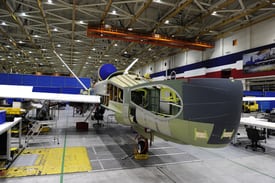
The Navy’s MQ-4 Triton, a variant of the Air Force’s RQ-4 Global Hawk, is scheduled to make its first flight in the “very near future” following the resolution of some technical problems that prompted the Navy to delay production earlier this year, a senior Northrop Grumman executive recently said. Tom Vice, the president of Northrop Grumman Aerospace Systems, said last week the problems lied within the development of some mission management software and the V-shaped tail known as a “ruddervator.”…












